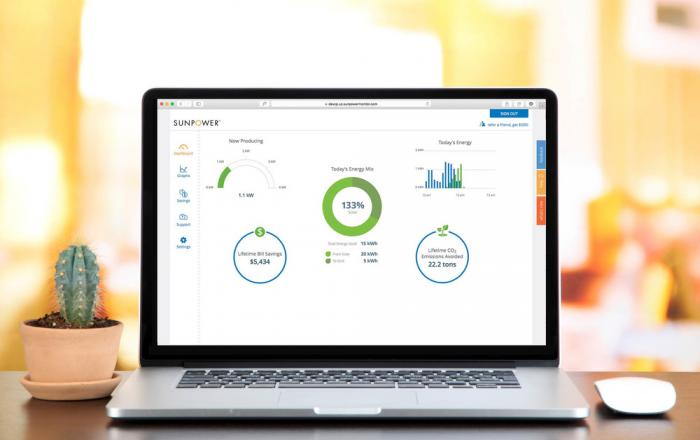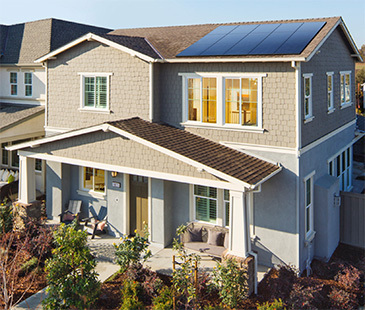
Editor's Note: For updated information on the solar ITC, please visit our latest blog on the subject. http://ow.ly/ENQW50IvzW6
Did you think about going solar in 2017 but didn't? While the number of solar energy installations is at an all-time high, with more than 1.5 million residential solar systems in the U.S., many homeowners are unsure about when to purchase a solar system.
If you've been waiting for installed solar prices to come down, there's good news. GTM Research reports that installed residential solar prices have dropped to an all-time low. However, because of a potential solar panel trade dispute, solar panel prices may not drop any further for a while. So, if you don't go solar in 2018, you likely will be losing more than you'd gain by waiting. Here are four reasons why you should go solar in 2018:
The 30% Federal Solar Tax Credit for 2018
Congress recently passed tax reform legislation that will reconfigure how Americans calculate their mortgage interest tax deductions in 2018. The good news for homeowners going solar is that the 30 percent solar investment tax credit (ITC) is still in place for 2018.1 However, the credit will drop to 26 percent after 2019 and down to 10 percent in 2021.
For homeowners who may no longer be able to write off as much of their mortgage interest as they have in past years, the 30 percent solar ITC may provide some additional tax relief for 2018. The ITC is not a tax deduction. It's a credit that you can use toward taxes owed to the IRS for 2018.1
For example, say your SunPower® solar system, including installation, costs $30,000. As long as it's connected to the utility before the end of 2018, you may be eligible to receive a $9,000 tax credit (30% of $30,000) toward your 2018 income taxes.1 Unlike a tax deduction, this tax credit is applied toward taxes owed for 2018. If you don't owe enough to get the full credit, you can apply it to the following year(s).
Save on Your Monthly Utility Bills

Here's a second reason to go solar sooner than later. If you call a SunPower home solar dealer now and get your solar system installed in the next few months, you'll be up and running in time to take advantage of sunnier spring days and reduce your summer air conditioning costs. Summer is a great time to have solar panels on your roof for several reasons.
First, the summer daylight hours are longer, which means your SunPower system is going to be working at maximum capacity. So, if you make more solar electricity than you use during those sunny months, depending on your local utility rules, you could build up a credit with your utility to apply toward your electric bills during the fall and winter, when your solar production will be lower.
"This March, our meter reset at zero, and so far, we've banked about 700 kilowatt-hours for summer that we'll use when we start using our AC to cool the house," explains SunPower system owner Gregory L. of Albany, New York.
Faster Financial Payback
So, the sooner you go solar in 2018, the faster you may see a return on your investment by locking in that 30 percent investment tax credit1 and generating extra utility bill credits for offsetting the summer months. Plus, you'll be capturing long-term utility savings that will pay for your solar system in a few years, depending on your usage, utility rates, system size and other factors. In fact, as financial advisers note, the value of a dollar saved today is greater than saving a dollar in the future, due to inflation and other factors.
To find out if your home is a good candidate for solar, try out our address-based solar calculator.
Even at the more conservative 10-year payback period, SunPower panels have a 25-year power and product warranty and a projected useful lifespan of 40 years,3 so your savings will accumulate long after your solar system has been paid for.
Increase Your Home's Value
In addition to direct bill savings, installing solar in 2018 can be a great investment if you ever plan to sell your home.
A report on solar and home values from Lawrence Berkeley National Laboratory found that some buyers are willing to pay a premium of $12,000-$15,000 for a home with an average-sized, resident-owned solar array.4 It's clear that home buyers are willing to compensate solar homeowners for the cost of their investment.
With the above in mind, 2018 may be the year to finally go solar. The best way to truly find out is to get a free solar quote from a local SunPower Dealer. Our expert solar advisors can look at your home and show you whether it makes financial sense for you to go solar. Contact us by filling out the Dealer form or by calling us at 1-844-578-6793.
Related posts
1 Tax credits subject to change. SunPower does not warrant, guarantee or otherwise advise its partners or customers about specific tax outcomes. Consult your tax advisor regarding the solar tax credit and how it applies to your specific circumstances. Please visit the dsireusa.org website for detailed solar policy information.
2 Customer savings vary depending upon a number of factors including (but not limited to) the following: equipment used, system size, system orientation and shading, insolation available, applicability utility rates and rate structure, as well as customer's eligibility for rebates, incentives, and net-metering or similar programs (the availability of which may differ for each customer).
3 "SunPower Module 40-Year Useful Life," SunPower white paper. 2013. Useful life is 99 out of 100 panels operating at more than 70% of rated power.
4 Source: Hoen, B., Adomatis, S., Jackson, T., Graff-Zivin, J., Thayer, M., Klise, G., & Wiser, R. (2015). Selling Into the sun: Price Premium Analysis of a Multi-State Dataset of Solar Homes. Based on an analysis of homes with and without solar systems in 8 states (including CA, CT, FL, MA, MD, NC, NY and PA) from 1999 through 2013. Actual impact on home values will vary.

